SHOEI Production & History
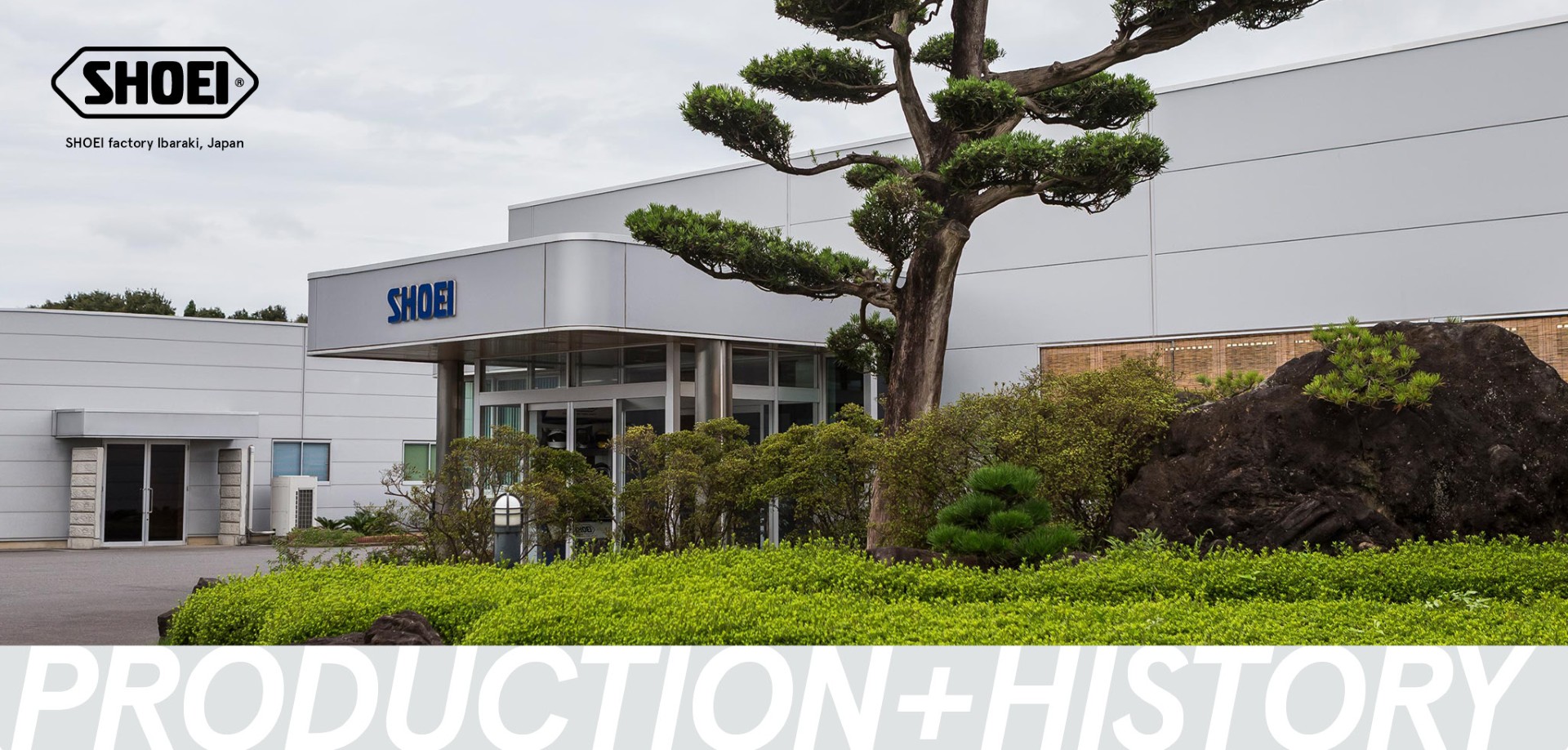
Helmets, past and presence
The name SHOEI has long been synonymous with „premium“ in the motorcycle helmet market – a credential that hundreds of loyal men and women in our Japan factories wear with great pride.
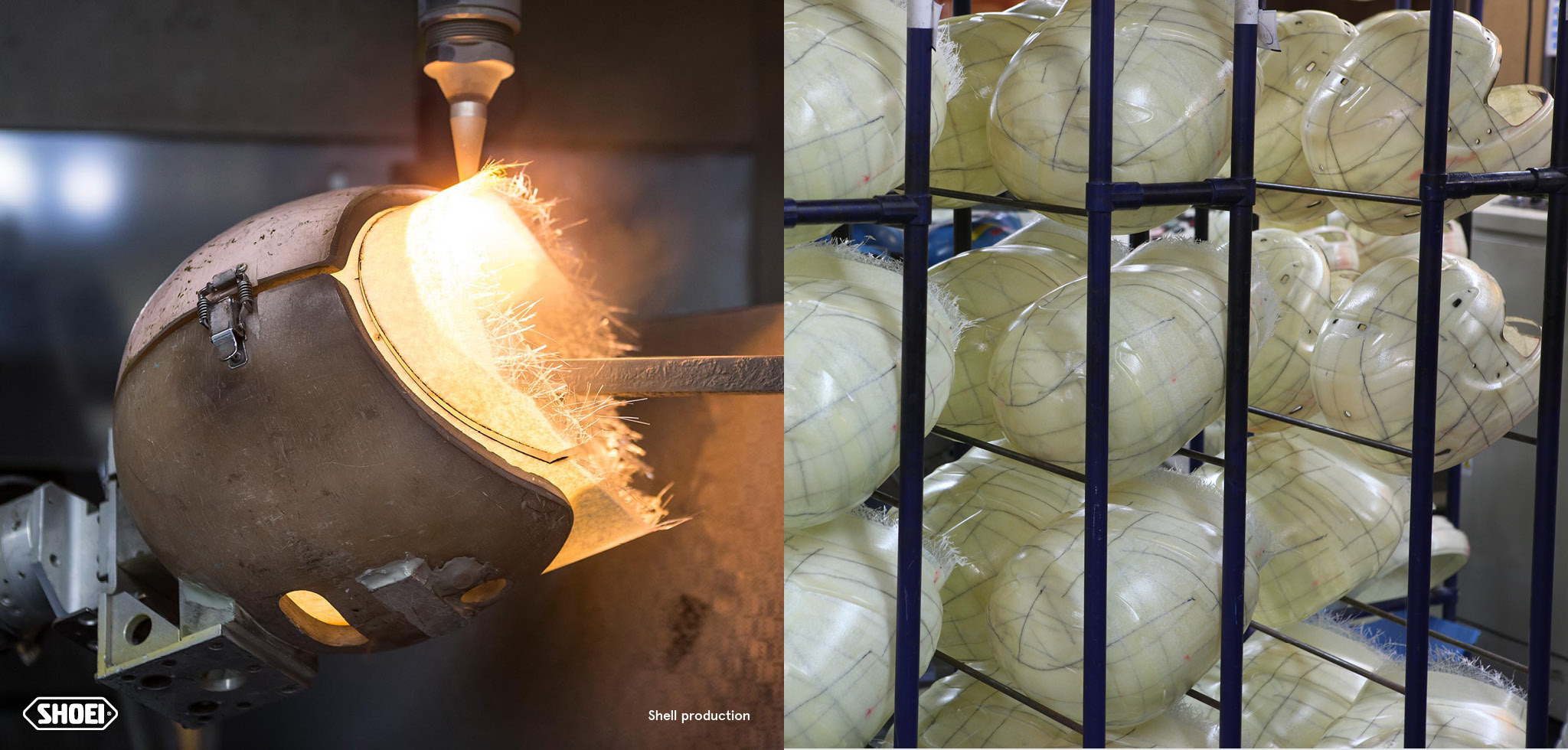
The evolution and production of our world-class helmet line is a meticulous process that combines the very latest in technology with consumer feedback, modern testing practices, advanced materials, and 60 years of helmet building experience.
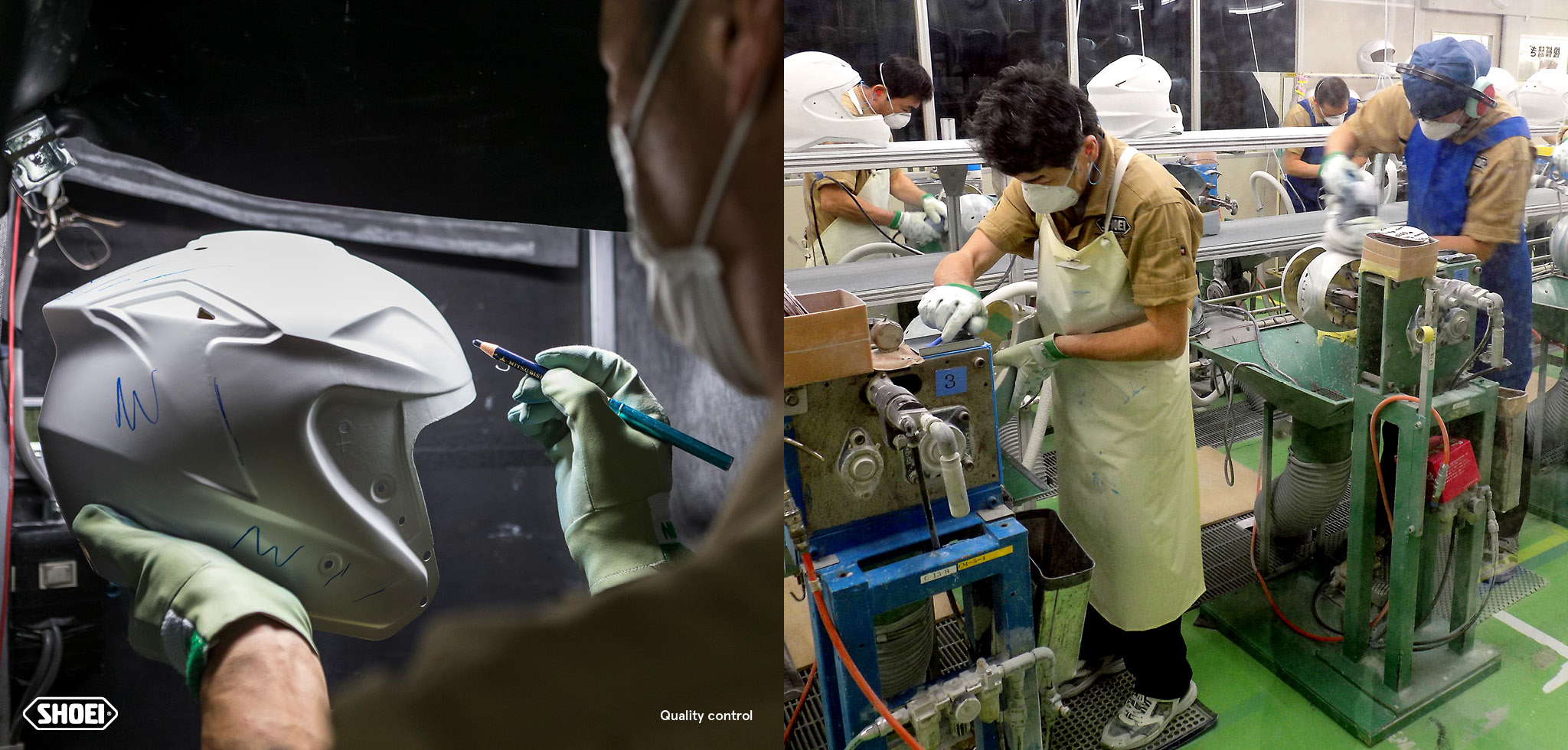
Just like the very first SHOEI helmet built by our founder back in 1959, every Shoei today is still handmade in Japan utilizing a sophisticated process that involves over 50 people for each and every helmet.
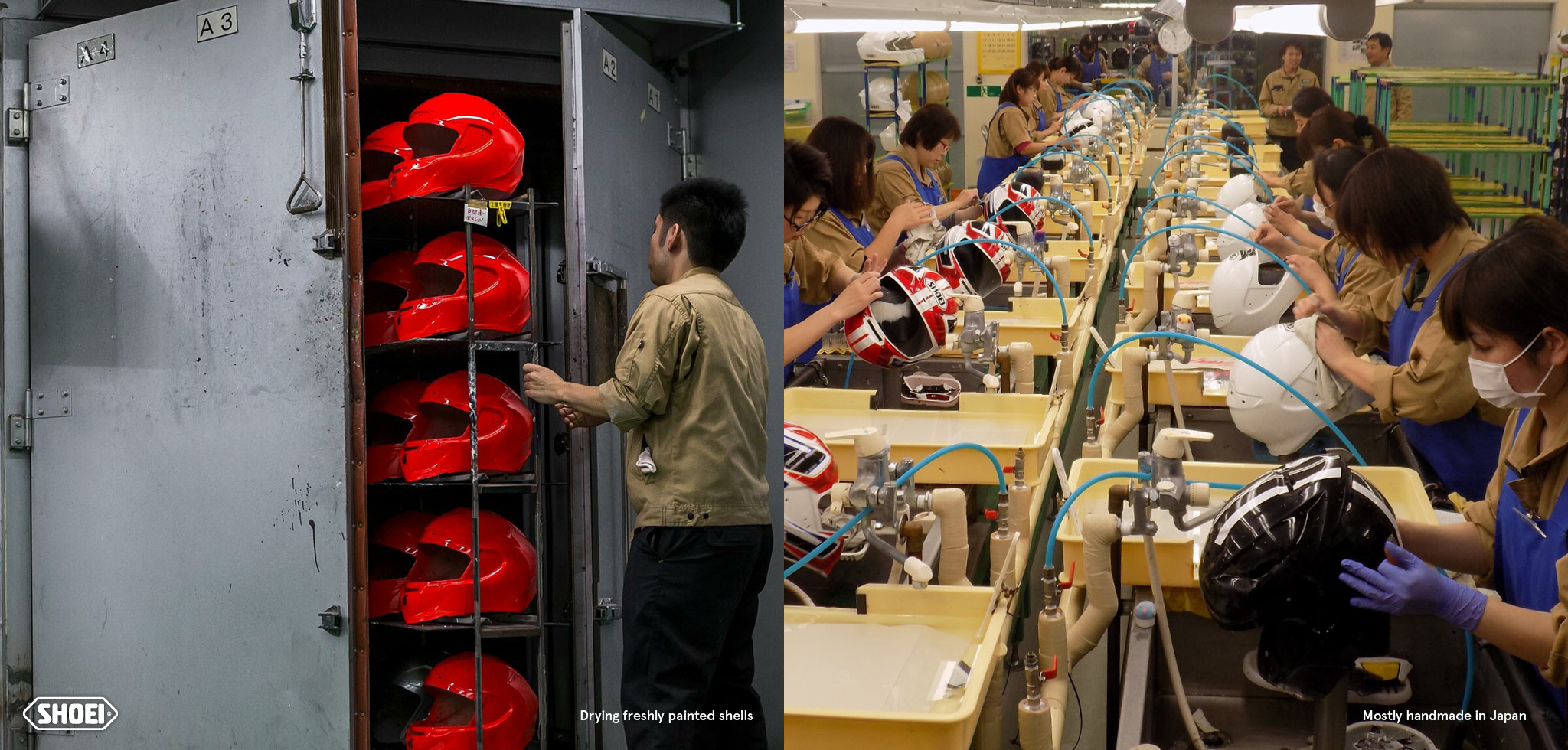
SHOEI prides itself in building the very best helmets that our state-of-the-art manufacturing technologies will allow, but we also maintain the core belief that good old fashioned field research yields the highest performing, most functional helmets producible.
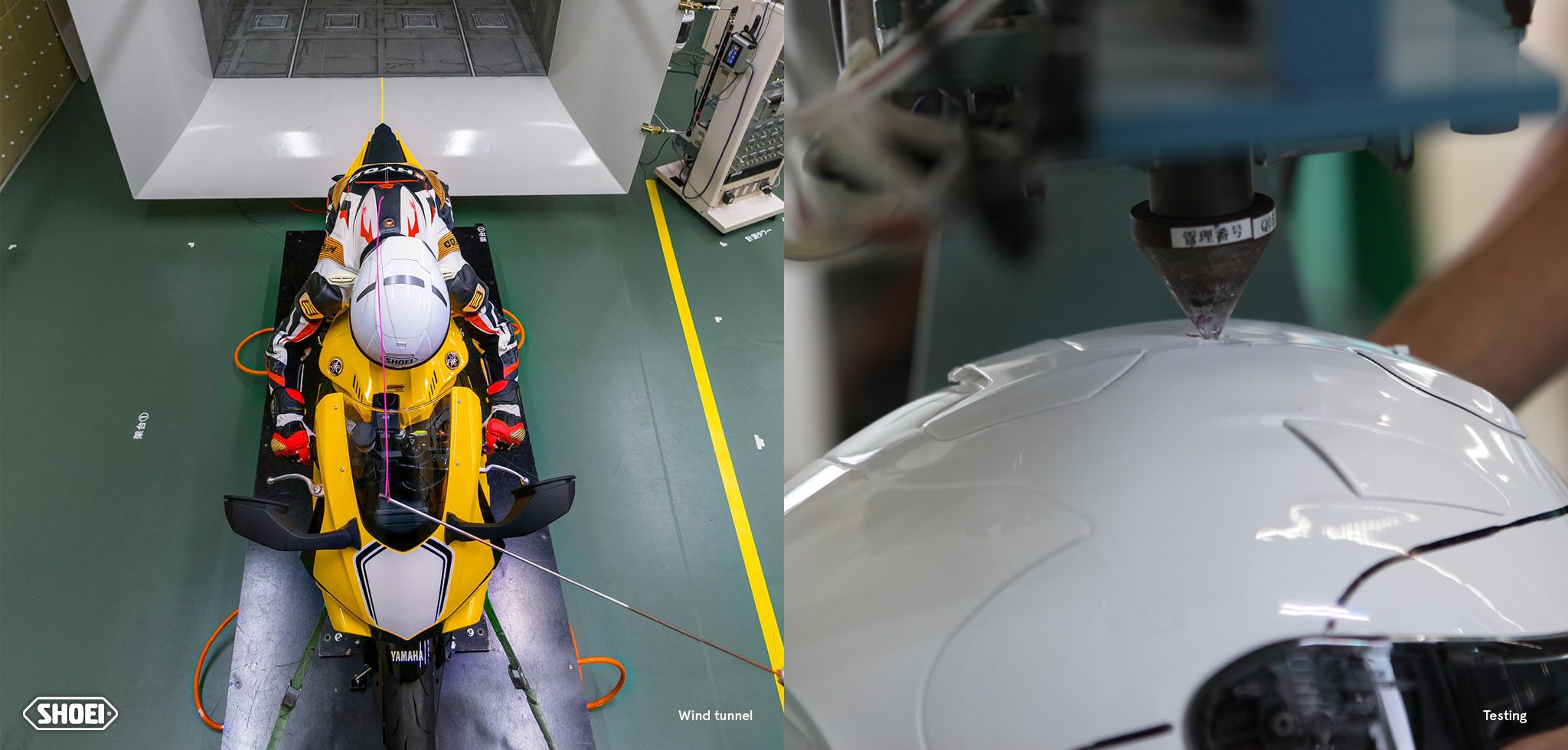
SHOEI helmets are the result of countless hours of conceptualization and R&D, but equally as important is the time spent testing with the most hardcore critics of them all – our professional Racing Team. From our MotoGP race team service to world-class racers like Marc Márquez (MotoGP) and Jeremy Seewer (MXGP), our helmets are put through the ringer, resulting in the fine-tuned masterpieces Shoei is valued for.
Video of the SHOEI helmet production:
SHOEI FACTORY production process_with Enlish subtitles from Shoei Europe on Vimeo.
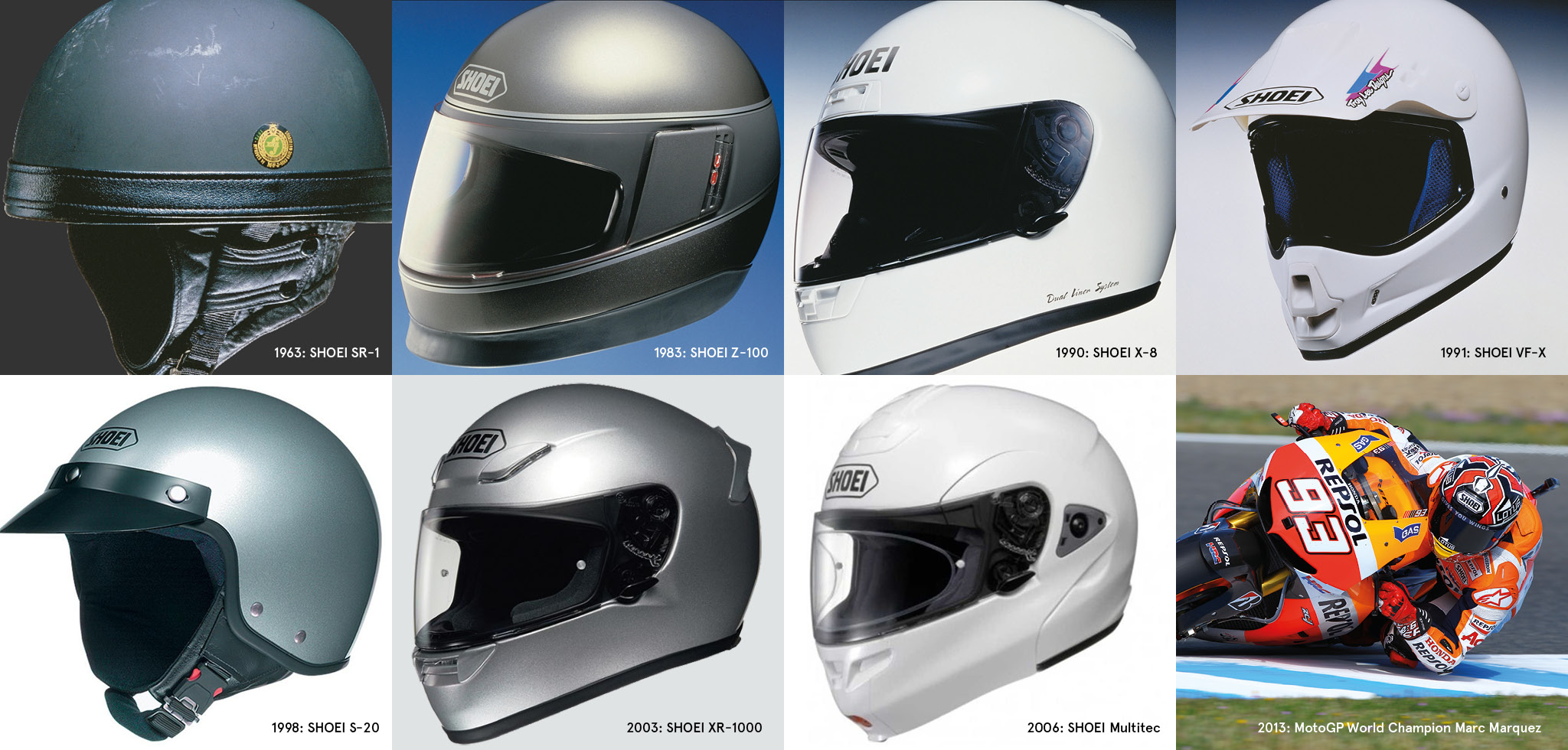
Timeline
1959 Founding of the SHOEI Kako Co., Ltd. Start of production of multi-purpose safety helmets in Tokyo.
1960 Start of production of multi-purpose safety helmets in Tokyo.
1963 Introduction of the SR-1, the first racing helmet from SHOEI.
1967 Start of production of the SHOEI SR-Z, the first full face helmet.
1968 Founding of SHOEI Safety Helmet Corporation in California, USA.
1976 Introduction of the world’s first carbon fibre helmet, the SHOEI GR-Z.
1983 Appearance of the SHOEI Z-100 with innovative developments like injection moulded visor and built-in chin spoiler.
1984 For the first time in the history of motorcycle helmets, ventilation is implemented into a helmet with the SHOEI RF-102V and the TJ- 201V.
1990 SHOEI introduces its X-8, the first helmet with internal visor mechanism. No covers are needed.
1991 Introduction of the VF-X off-road helmet.
1992 Wayne Rainey wins the 500cc world championship for the 3rd time in a row with SHOEI. SHOEI riders have won all 500cc world championships since 1987.
1993 SHOEI introduces the X-8SP with a revolutionary two-part EPS liner.
1999 Alex Criville wins the 500cc world championship with SHOEI.
2003 Introduction of the SHOEI XR-1000 helmet.
2006 The SHOEI Multitec marks a new era in flip-up helmets.
2009 Introduction of the SHOEI VFX-W, an icon in motocross helmets.
2011 The new SHOEI wind tunnel is opened in Ibaraki, Japan.
2012 Introduction of the SHOEI GT-AIR. The most advanced touring helmet.
2013 Marc Marquez wins the MotoGP championship with SHOEI.
2015 SHOEI introduces the X-Spirit 3, the most advanced racing helmet, and the JO, the most beautiful open face helmet.
2018 Introduction of the SRL (SHOEI Rider Link) communication system, for which there is a special recess in the helmet shell for the first time.
2019 Marc Marquez wird zum 6 mal mit einem Shoei Helm Weltmeister der MotoGP.
2022 SHOEI introduces the professional X-SPR Pro racing helmet as a new technological flagship.
2024 With the new NEOTEC3 and GT-Air3, SHOEI presents two reference helmets for the touring sector.
